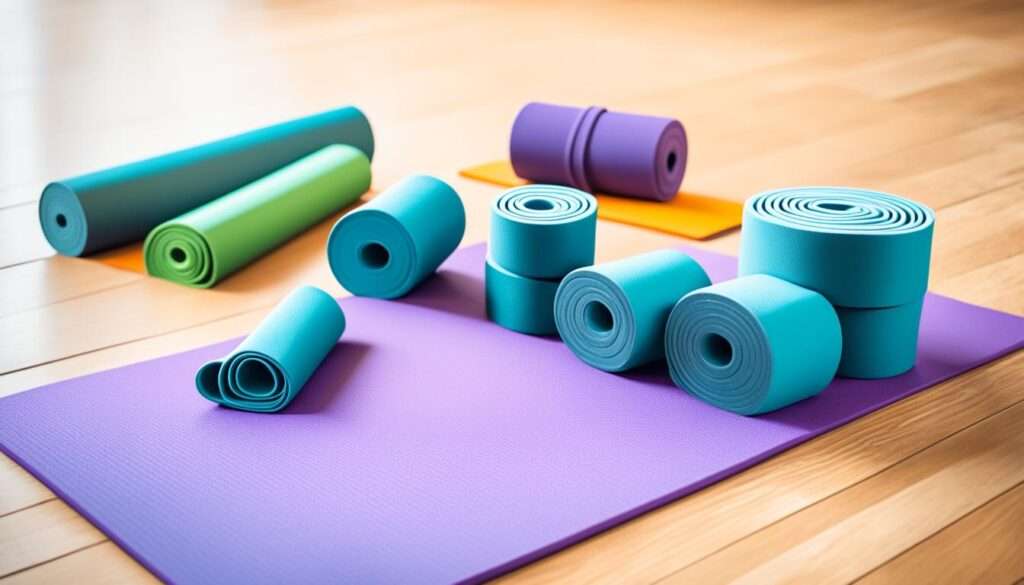Medically reviewed by Dr Chandril Chugh,
Renowned Neurologist and American Trained Specialist
Welcome to the 30 Days of Yoga Challenge for Flexibility! This challenge is specially designed for beginners and individuals who struggle with flexibility. If you’ve ever wished to touch your toes effortlessly or do the splits, this challenge is for you. Over the next 30 days, we will guide you through a series of yoga poses and routines that will help improve your flexibility and overall well-being.
Table of Contents
ToggleFlexibility is not just about being able to bend and stretch your body; it is also about finding ease and freedom in movement. By committing to this 30-day challenge, you will not only increase your physical flexibility but also enhance your mental and emotional flexibility. Yoga is a holistic practice that promotes balance, strength, and mindfulness, and it can have a transformative impact on your life.
Throughout this challenge, we will incorporate various forms of stretching, including dynamic, active, and passive stretching. These different types of stretches will help you improve your range of motion, release tension in tight muscles, and develop a deeper connection with your body. You may also use props such as blocks, pillows, and straps to support your practice and make it more accessible.
So whether you’re a total beginner or someone looking to take your flexibility to the next level, we invite you to join us on this journey. Get ready to challenge yourself, discover new possibilities, and unlock your body’s potential. Are you ready to take the first step towards a more flexible you?
Key Takeaways:
- Join the 30 Days of Yoga Challenge for Flexibility to improve your flexibility.
- This challenge is suitable for beginners and individuals who struggle with flexibility.
- Dynamic, active, and passive stretching will be incorporated throughout the challenge.
- Props like blocks, pillows, and straps can be used for support and accessibility.
- Unlock the potential of your body and experience the transformative benefits of yoga.
The Benefits of a 30-Day Yoga Challenge
Taking part in a 30-day yoga challenge offers numerous benefits. It provides an opportunity to establish a healthy habit, enhance accountability, and create a routine that supports physical and mental well-being.
By participating in such a challenge, you can explore different yoga poses and sequences, discovering new ways to stretch and move your body. The challenge serves as a source of inspiration, offering something new each day to keep the practice engaging and exciting.
Additionally, a 30-day yoga challenge can help you work towards specific goals, such as increasing flexibility, achieving splits, or finding relaxation. Through dedicated practice, you can experience physical and mental transformation.
Let’s dive deeper into the benefits of a 30-day yoga challenge:
1. Establishing a Healthy Habit
Participating in a 30-day yoga challenge allows you to establish a healthy habit of daily practice. By committing to a consistent routine, you develop discipline and create space in your life for self-care.
2. Enhancing Accountability
A 30-day yoga challenge provides a structured framework that holds you accountable. Knowing that you have committed to a daily practice motivates you to stay on track and complete each session.
3. Exploring New Poses and Sequences
Every day of the challenge introduces you to new yoga poses and sequences. This variety keeps your practice fresh and helps you discover new ways to stretch and move your body.
4. Source of Inspiration
The daily challenges in a 30-day yoga challenge serve as a source of inspiration. Each day brings something new, keeping your practice exciting and preventing boredom.
5. Working Towards Specific Goals
Whether you want to increase flexibility, achieve splits, or find relaxation, a 30-day yoga challenge can help you work towards your specific goals. The progressive nature of the challenge allows you to make steady progress over time.
6. Physical and Mental Transformation
By dedicating yourself to a 30-day yoga challenge, you can experience both physical and mental transformation. Regular practice improves flexibility, strength, and balance, while also promoting relaxation, stress reduction, and mental clarity.
Embark on a 30-day yoga challenge and unlock the numerous benefits that await you. Discover the power of consistency, dedication, and the transformative effects of yoga.
Who Should Take on the 30-Day Yoga Challenge?
This 30-day yoga challenge is specifically designed for beginners and individuals who struggle with flexibility. Whether due to a sedentary lifestyle, imbalances, or unique skeletal structures, anyone can benefit from this challenge. The program offers a range of accessible poses that accommodate different flexibility levels.
It is suitable for individuals who cannot reach deep stretches and may require the use of props like blocks, pillows, and straps. Additionally, even those who are already flexible or looking for a gentle practice can participate in this challenge to explore a more relaxed approach to yoga.
Joining the 30-day yoga challenge is a great opportunity to improve your flexibility and overall well-being. The program is designed to cater to individuals of all flexibility levels, making it suitable for beginners and those who find it challenging to perform certain poses. Whether you are looking to enhance your flexibility, reduce stress, or simply explore a new form of exercise, this challenge is perfect for you. By committing to the 30-day yoga challenge, you can embark on a transformative journey towards improved physical and mental well-being.
What to Expect in the 30-Day Yoga Challenge?
The 30-day yoga challenge is an exciting journey that focuses on improving your flexibility, strength, and mobility. Throughout the challenge, you will engage in various forms of stretching, including dynamic, active, and passive stretching.
Dynamic stretching involves moving your body while simultaneously stretching your muscles. It helps increase your range of motion and prepares your body for the yoga practice ahead. Expect to perform movements that flow seamlessly from one pose to another, warming up your muscles and joints.
Active stretching is all about using your own strength to hold a position without any external assistance. This form of stretching helps improve your balance, stability, and muscle control. You will feel your muscles working to maintain the pose, developing strength and flexibility simultaneously.
Passive stretching, on the other hand, allows you to hold poses with or without support. Gravity plays a significant role in passive stretching, gently pulling your body into deeper stretches. This form of stretching helps increase flexibility by encouraging muscle relaxation and elongation.
The 30-day yoga challenge is carefully designed to strike a balance between strength and flexibility. You will explore a variety of yoga poses and routines that target different areas of the body. From standing poses that improve balance and stability to seated poses that increase hip flexibility, each day will bring a new focus area and unique set of poses.
To give you a visual representation of the challenge, here’s a table outlining the different types of stretching and their benefits:
| Types of Stretching | Benefits |
|---|---|
| Dynamic Stretching |
|
| Active Stretching |
|
| Passive Stretching |
|
By participating in the 30-day yoga challenge, you can expect to experience improvements in your flexibility, strength, and overall well-being. It’s time to embark on this transformative journey and unlock your full potential.

Props Recommended for the 30-Day Yoga Challenge
To enhance your experience during the 30-day yoga challenge, we highly recommend having the following props on hand. These props provide additional support and modifications for poses, particularly for individuals with limited flexibility.
- 2 blocks (or alternatively, stack books securely taped together)
- 4 or more pillows (or alternatively, large folded blankets)
- A yoga strap (or alternatively, a belt, long sheet, or long-sleeve sweater)
While the use of props is optional, they can greatly enhance your practice and make it more comfortable and accessible. Having these props readily available allows you to modify poses as needed, providing the support you require to fully engage in the challenge.
Using blocks, pillows, and a yoga strap can assist in achieving proper alignment, improving stability, and creating a safe and comfortable environment for your yoga practice. These props can be used in various poses, helping you deepen stretches, extend reach, and maintain balance.
By utilizing props during the 30-day yoga challenge, you can customize your practice to suit your individual needs and ensure a rewarding and enjoyable experience.
Recommended Props for the 30-Day Yoga Challenge
| Props | Description |
|---|---|
| Blocks | Provide stability and support for various poses, allowing for proper alignment and easier modification. |
| Pillows | Offer additional cushioning and comfort, assisting in maintaining proper alignment and making poses more accessible. |
| Yoga Strap | Aids in extending reach and deepening stretches, particularly in poses that require flexibility or require a wider grip. |

Having these props readily available throughout the 30-day yoga challenge will allow you to fully engage in the practice, customize poses to your needs, and enhance your overall yoga experience.
The Yoga Classes in the 30-Day Challenge
The 30-day yoga challenge consists of a series of yoga classes that are specifically designed to target different areas of the body and focus on various aspects of flexibility and strength. Each day of the challenge, you will have access to a specific class that centers around different themes such as full-body warm-up, stretching, mobility, posture, and relaxation.
These yoga classes incorporate a variety of poses and flows that aim to promote flexibility and strength in specific body parts, including the shoulders, hips, and legs. Through these classes, you will engage in a range of movements and stretches that are specifically designed to improve your overall flexibility and mobility.
Each class builds upon the previous ones, gradually challenging your body and creating a progressive journey towards increased flexibility. By following the structured sequence of classes throughout the 30-day challenge, you will experience a gradual improvement in your flexibility, enhanced strength, and an overall sense of physical and mental well-being.

The Importance of Consistency in the 30-Day Yoga Challenge
In order to fully embrace the benefits of the 30-day yoga challenge, consistency is key. Making a commitment to regular practice, ideally on a daily basis, allows you to make progress and truly experience the transformative effects of the challenge. By incorporating yoga into your daily routine, you form a new habit that supports your physical and mental well-being.
While practicing yoga every day may not always be feasible due to busy schedules or other commitments, maintaining consistency by practicing several times a week ensures steady progress. By dedicating even a few moments of your day to yoga, you are actively contributing to your flexibility and overall well-being.
It is important to recognize that the 30-day yoga challenge requires dedication and perseverance. There may be days when you feel less motivated or times when life gets in the way, but it is during these moments that consistency becomes even more crucial. By staying committed to your practice, you develop the resilience needed to overcome obstacles and continue moving forward on your yoga journey.
Consistency not only helps you progress in your physical abilities, but it also cultivates mindfulness and mental clarity. Each time you step onto your mat, you create a space for focus and self-reflection. This consistent practice enables you to deepen your connection with your body, mind, and spirit.
Remember, the 30-day yoga challenge is not just about completing a set number of days, but rather about embracing a lifelong practice. By maintaining a consistent routine, you can experience transformative changes in your flexibility, strength, mental well-being, and overall quality of life.

| Benefits of Consistency in the 30-Day Yoga Challenge: |
|---|
| 1. Progress in flexibility and strength |
| 2. Improved mental clarity and focus |
| 3. Enhanced mind-body connection |
| 4. Stress reduction and relaxation |
| 5. Development of a lifelong yoga practice |
The Role of Mindset in the 30-Day Yoga Challenge
Mindset plays a crucial role in the success of the 30-day yoga challenge. It is important to approach the challenge with a positive and determined mindset. There may be days when motivation is low or external factors make practice difficult, but cultivating a mindset of perseverance and discipline helps overcome these obstacles. Recognizing the mental and emotional benefits of yoga, such as stress reduction and relaxation, can serve as powerful motivators. By focusing on the transformative aspects and the overall journey rather than fixating solely on achieving specific poses, participants can maintain a positive mindset and derive greater satisfaction from the challenge.
Yoga is not just a physical practice; it is also an exercise for the mind and spirit. The 30-day yoga challenge provides an opportunity to develop mental resilience and strengthen the connection between the body and mind. By dedicating yourself to this challenge, you are committing to personal growth and well-being.
When faced with challenges or setbacks during the 30-day journey, remember to be gentle with yourself and practice self-compassion. Celebrate your progress, no matter how small, and acknowledge the effort you put into each practice.
One way to stay motivated is to establish a daily ritual for your yoga practice. Setting aside a specific time and space for yoga can help create a sense of routine and consistency. By making your yoga practice a priority, you are reinforcing the importance of self-care and nurturing your well-being.
Additionally, surround yourself with positive influences and a supportive community. Engage with fellow participants in the 30-day yoga challenge, whether through online forums or local yoga studios. Sharing your experiences and challenges can inspire and motivate others, while also receiving encouragement and support from like-minded individuals.
Finally, remember that the ultimate goal of the 30-day yoga challenge is not perfection. Embrace the journey with an open mind and heart, allowing yourself to grow and evolve both physically and mentally. Stay present in each practice, focusing on the breath and the sensations in your body. By cultivating a positive mindset and staying motivated throughout the challenge, you can experience profound transformations in your flexibility, strength, and overall well-being.
How Long Does It Take to Achieve Full Splits?
The timeframe to achieve full splits varies for each individual. Factors such as age, gender, joint structure, muscle bulk, and prior injuries can influence natural flexibility. While the 30-day yoga challenge provides an opportunity to work towards full splits, it may take longer than the duration of the challenge for some individuals to reach this goal. Consistent stretching, along with the right mindset and approach, is crucial. For some, it may take 3 to 12 months of consistent stretching to achieve full splits. However, it is important to remember that the main focus should be on increasing overall mobility and feeling better in one’s body, rather than solely striving for a specific pose.
| Factors Influencing Timeframe for Full Splits | Estimated Timeframe |
|---|---|
| Age | Varies, but flexibility tends to decrease with age. Younger individuals may progress faster. |
| Gender | Varies, as women are generally more naturally flexible than men. |
| Joint Structure | Varies, as differences in joint structure can affect range of motion. |
| Muscle Bulk | Varies, as bulkier muscles may take longer to stretch and achieve full splits. |
| Prior Injuries | Varies, as past injuries can impact flexibility and require additional care. |
Stretching Tips and Common Misalignments in Flexibility
Proper stretching techniques are essential for optimizing flexibility and avoiding potential misalignments and injuries. To ensure you get the most out of your flexibility practice, here are some helpful stretching tips:
- Warm up your body before stretching to increase blood flow and prepare your muscles for deeper stretches.
- Start gently and gradually increase the depth of your stretches over time. Pushing too hard can lead to injuries.
- Avoid pushing beyond 70% of your range of motion to prevent overstretching and straining your muscles.
- Focus on your breath and relax into each stretch. Deep, controlled breathing can help release tension and increase flexibility.
- Use timers to maintain consistent timing for each stretch. This ensures you give each pose or exercise adequate time to stretch and relax your muscles.
- Utilize props such as blocks, pillows, and straps to support your body and modify poses as needed. Props can help you achieve proper alignment and prevent unnecessary strain.
While stretching is beneficial for flexibility, it’s important to be aware of common misalignments that can occur during your practice. Pay attention to the following misalignments to maintain proper form:
- Uneven hips: Ensure that both hips are level and aligned when performing stretches.
- Rotated back leg: When lunging or performing split variations, keep your back leg aligned with your hip to prevent strain.
- Flat front foot: Avoid collapsing the arch of your front foot during standing poses to maintain proper balance and stability.
- Curved spine: Keep your spine elongated and avoid rounding or overarching your back during stretches to protect your spinal integrity.
- Shrugged shoulders: Relax your shoulders and keep them away from your ears to prevent unnecessary tension and strain on your neck and upper back.
| Stretching Tips | Common Misalignments |
|---|---|
| Warm up before stretching | Uneven hips |
| Start gently and gradually increase depth | Rotated back leg |
| Don’t push beyond 70% of range of motion | Flat front foot |
| Focus on breath and relaxation | Curved spine |
| Use timers for consistent timing | Shrugged shoulders |
| Utilize props for support and modifications |
Yoga Poses and Routines to Prepare for Full Splits
Preparing the body for full splits involves a series of yoga poses and routines that target specific areas, gradually increasing flexibility and strength. Incorporating the following poses into your practice can help in the preparation for full splits:
- Reclined Hand to Big Toe Pose (Supta Padangusthasana): This pose stretches the hamstrings and opens the hips, preparing them for deeper splits.
- Crescent Moon (Anjaneyasana): This pose stretches the hip flexors and quadriceps while improving balance and stability.
- Half Splits (Ardha Hanumanasana): This pose focuses on stretching the hamstrings and prepares the body for the full split position.
- King Arthur Pose: This pose targets the hip flexors, quadriceps, and hip rotators, preparing the body for the deep stretch of full splits.
- Runner’s Lunge: This pose stretches the hip flexors and quadriceps, helping to increase flexibility in the legs.
- Lizard Pose (Utthan Pristhasana): This pose stretches the hips, groin, and hamstrings, providing a deeper opening in the hip area.
- Runner’s Lunge with Quadricep Stretch (Utthan Pristhasana Variation): This pose combines a deep stretch in the hips and groin with a stretch in the quadriceps.
By consistently practicing these poses and incorporating them into your routine, you can prepare your body for full splits and improve your overall flexibility.
Conclusion
Embarking on a 30-day yoga challenge for flexibility offers you the opportunity to improve your physical and mental well-being. This challenge is specifically designed for beginners and individuals with limited flexibility, providing accessible poses and routines that gradually enhance your flexibility, strength, and mobility.
Consistency is key in achieving the desired results. By committing to this challenge and maintaining a regular practice, you can experience a positive impact on your flexibility and overall well-being. Remember that the timeframe to achieve full splits may vary for each individual, but the focus should be on increasing your overall mobility, feeling better in your body, and experiencing the transformative benefits of yoga.
Through this 30-day yoga challenge, you can lay the foundation for a healthy habit and establish a routine that supports your physical and mental well-being. By dedicating yourself to this challenge and approaching it with the right mindset, you can unlock the potential within your body, enhance your flexibility, and experience a sense of harmony and well-being.
FAQ
Is the 30-day yoga challenge suitable for beginners?
Yes, the 30-day yoga challenge is specifically designed for beginners and individuals who struggle with flexibility.
What does the 30-day yoga challenge focus on?
The 30-day yoga challenge focuses on improving flexibility, strength, and mobility through a series of accessible poses and routines.
Are props recommended for the 30-day yoga challenge?
Yes, participants are encouraged to have props such as blocks, pillows, and a yoga strap for additional support and modifications.
What can I expect from the yoga classes in the 30-day challenge?
Each day of the challenge offers a specific class focusing on different aspects of flexibility and strength, targeting various areas of the body.
How important is consistency in the 30-day yoga challenge?
Consistency is key in this challenge. Regular practice, ideally on a daily basis, is essential for progress and maximum benefits.
How long does it take to achieve full splits?
The timeframe to achieve full splits varies for each individual, but it may take 3 to 12 months of consistent stretching and practice.
What are some stretching tips for optimizing flexibility?
Some stretching tips include warming up the body, starting gently and gradually increasing depth, focusing on breath and relaxation, and utilizing props for support.
What yoga poses can I practice to prepare for full splits?
Recommended poses to prepare for full splits include reclined hand to big toe pose, crescent moon, half splits, king arthur pose, and runner’s lunge, among others.
Source Links

Dr Chandril Chugh
Dr. Chandril Chugh is a U.S.-trained neurologist with over a decade of experience. Known for his compassionate care, he specializes in treating neurological conditions such as migraines, epilepsy, and Parkinson’s disease. Dr. Chugh is highly regarded for his patient-centered approach and dedication to providing personalized care.




